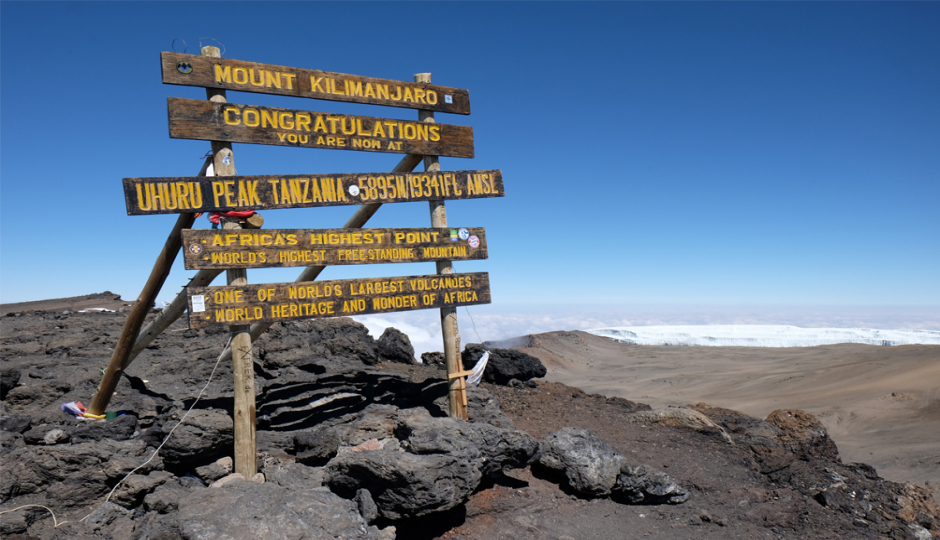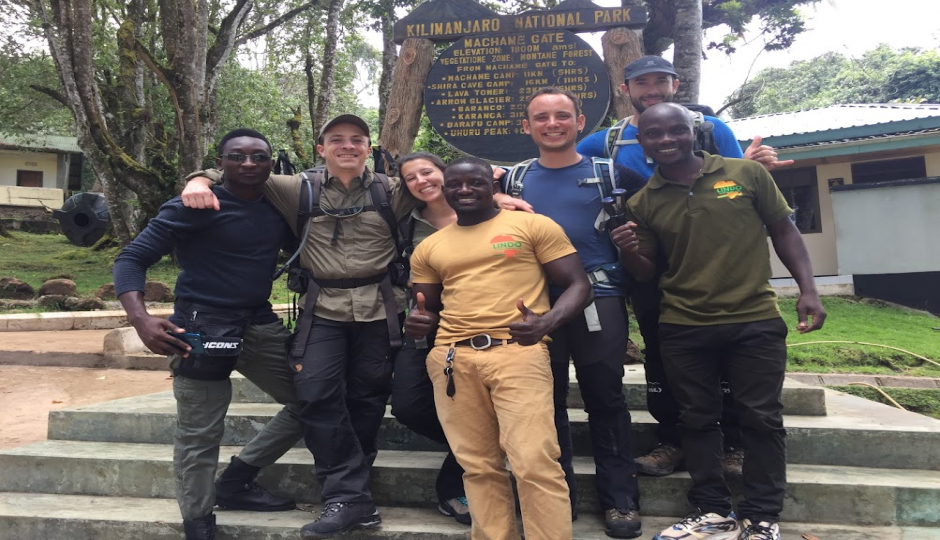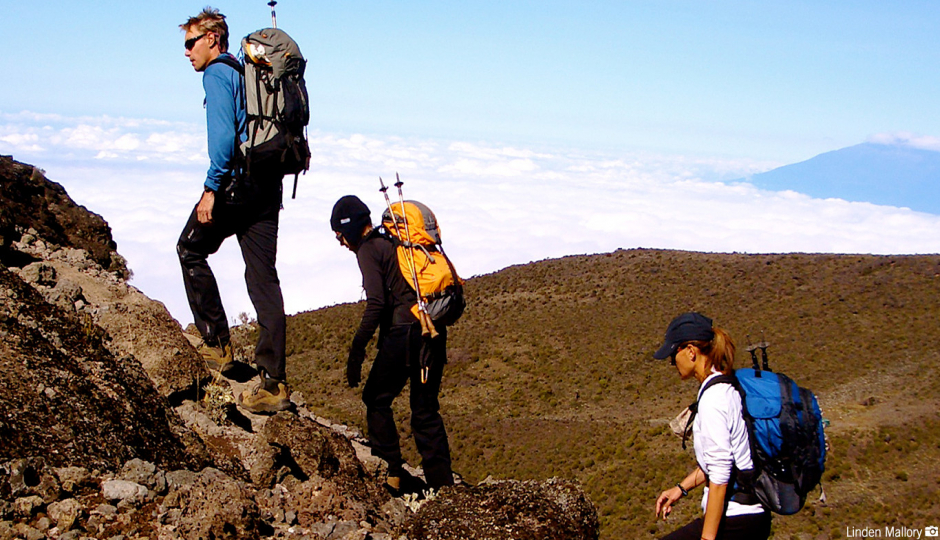





It takes at least 5 days to climb Mount Kilimanjaro. Though, a minimum of 6 days, and preferably 7 or 9 days, can give you a far better chance of reaching the summit of Mount Kilimanjaro. For those with a longer time to spare, there are several other slow and scenic climbing routes that can be done over 10 or more days.
Mount Kilimanjaro is an extraordinary natural icon. The world’s tallest freestanding volcano mountain towers are almost 5km/3mi above the hot dusty plains of northeast Tanzania. The jagged glacial peaks, which frame the gaping Kibo Crater, support a year-round cover of snow. This is despite lying only 400km/249mi south of the equator. Mount Kilimanjaro tops the bucket list of many keen hikers and peak-baggers, those attempting to reach a collection of summits. Not only is it 5,895m/19,340ft Uhuru Peak the highest point in Africa, but it can be summited without specialized mountaineering experience or equipment.
For all that, this majestic mountain is not to be underestimated. It requires a fair degree of fitness and determination to climb Kilimanjaro. And hikers should be alert to the health risks associated with the unusually rapid gain in altitude.
All climbs of Kilimanjaro must be arranged with a registered Tanzanian operator, who will provide guides and porters, as well as camping gear, meals, and water. The duration of a Kilimanjaro climb is almost invariably agreed upon in advance and will depend upon several factors. These include the route you opt to take, as well as your budget, your level of fitness, and how much time you allow for acclimatization.
The world record for a Kilimanjaro climb, set in 2014, belongs to the Swiss mountain runner Karl Egloff, who completed the full ascent and descent in under seven hours. At the other end of the timing scale, relaxed mountain goats could think about dedicating two weeks to circumnavigating the upper slopes of Kilimanjaro before they actually summit. But these are extremes. Most marketable hikes take between 5 and 7 days.
The longer you give to a Kilimanjaro expedition, the better the probability of reaching the top. Data collected by Kilimanjaro National Park shows that fewer than 30 percent of those who attempt a 5-day climb reach the top. For 6- and 7-day climbs, the success rate increases to around 45 and 65 percent respectively. By contrast, more than 85 percent of those who assign 8 days or longer reach the summit.
Allowing 7 days or more for a Kilimanjaro has several advantages. It is safer than a shorter climb, with a reduced risk of altitude-related illness and fatigue-related accidents. A longer climb also allows you to opt for one of the quieter and more scenic alternatives to the overcrowded Marangu Route. It gives you a greater opportunity to appreciate the landscapes and vegetation, ranging from leafy montane rainforest to Afro-alpine moorland studded with giant lobelias and heathers. And it provides a better chance of encountering monkeys, chameleons, birds, and other wildlife found in the area.
There are two major disadvantages to a longer climb. The first is that every extra day on the mountain attracts additional park fees and increases the overall cost of the expedition. The second is that it allows less time for exploring other iconic Tanzania attractions such as Serengeti National Park, Ngorongoro Crater, and Zanzibar. Despite this, given that the climb is a once-in-a-lifetime experience, we strongly recommend giving at least 6 or better 7 days to Kilimanjaro.
How long does it take to climb Kilimanjaro depends mainly on which route you use?
There are six official routes for climbing, and all have their pros and cons. Most hikers use the Marangu Route since it is quicker, cheaper and in many ways more convenient than any other, unfortunately, the Marangu Route also suffers from overcrowding. Of the other routes, Machame is a popular compromise for cost-conscious travelers wanting to avoid the crowds. More scenic, gradual, and quieter options suited to solitude-seeking outdoor lovers with deep pockets are the Shira, Lemosho, Rongai, and Northern Circuit routes.
There are also two other routes: Umbwe and Mweka.
These fast but steep routes are recommenced only to very experienced mountaineers who don’t require much acclimatization. However, the Mweka Route is often used as a quick descent route by people who ascended via Machame, Shira, or Lemosho Route.



How Do I Plan a Kilimanjaro Climb?
How Much Does a Tanzania Safari Trip Cost?
Is It Worth Going on a 1-Day Tanzania Safari?
To book your adventure, simply send us an email detailing your desired experience—whether it's climbing Mount Kilimanjaro, going on a Tanzania safari, or enjoying the Zanzibar beach.
We'll promptly respond with all the information you need to finalize your plans. Plus, we offer the convenience of online payment to make the process even smoother.
View Packages